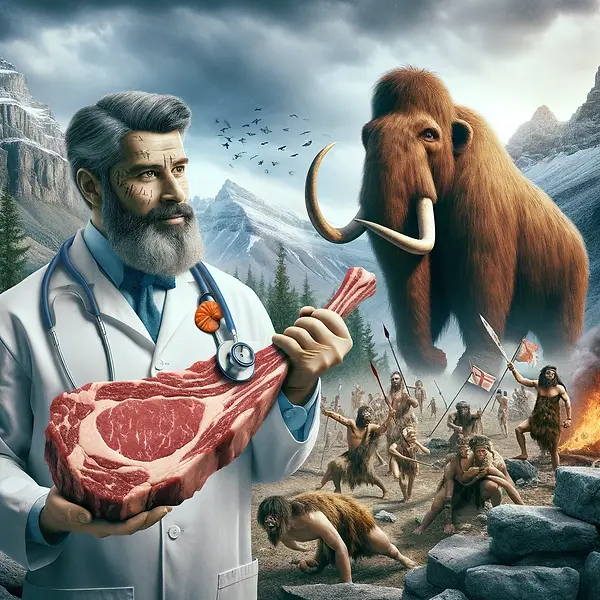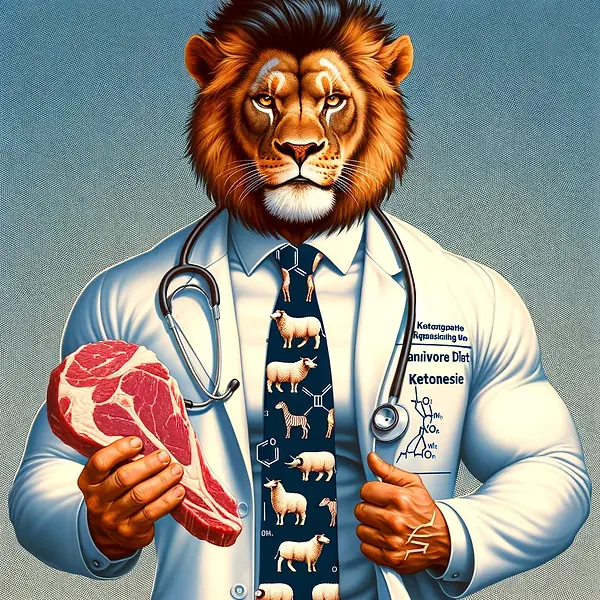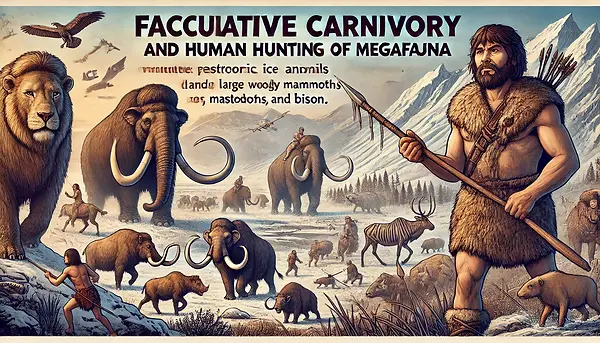
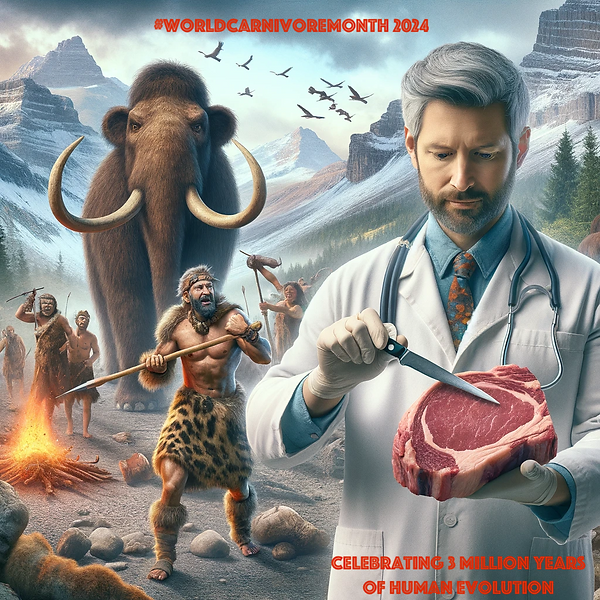
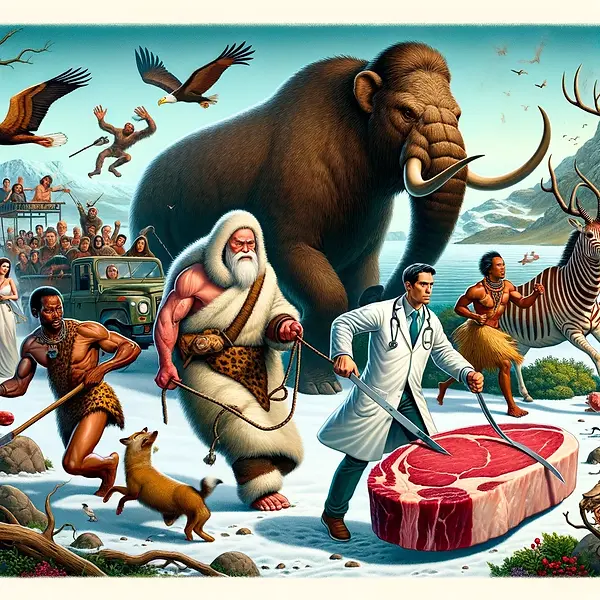
Title:
Humans spent less time on feeding compared to other apes, indicating that meat was changing anatomy of molar size through evolution.
Abstract:
Phylogenetic rate shifts in feeding time during the evolution of Homo
Unique among animals, humans eat a diet rich in cooked and nonthermally processed food. The ancestors of modern humans who invented food processing (including cooking) gained critical advantages in survival and fitness through increased caloric intake. However, the time and manner in which food processing became biologically significant are uncertain. Here, we assess the inferred evolutionary consequences of food processing in the human lineage by applying a Bayesian phylogenetic outlier test to a comparative dataset of feeding time in humans and nonhuman primates. We find that modern humans spend an order of magnitude less time feeding than predicted by phylogeny and body mass (4.7% vs. predicted 48% of daily activity). This result suggests that a substantial evolutionary rate change in feeding time occurred along the human branch after the human–chimpanzee split. Along this same branch, Homo erectus shows a marked reduction in molar size that is followed by a gradual, although erratic, decline in H. sapiens. We show that reduction in molar size in early Homo (H. habilis and H. rudolfensis) is explicable by phylogeny and body size alone. By contrast, the change in molar size to H. erectus, H. neanderthalensis, and H. sapiens cannot be explained by the rate of craniodental and body size evolution. Together, our results indicate that the behaviorally driven adaptations of food processing (reduced feeding time and molar size) originated after the evolution of Homo but before or concurrent with the evolution of H. erectus, which was around 1.9 Mya.
Details
Starting with Homo erectus, humans developed smaller molars and also began to spend a lot less time on feeding than would be predicted from body mass and phylogeny with other apes (only 5% instead of a predicted 48% of daily activity in Homo sapiens) [Organ et al. 2011].
Discussion
In this paper, we have taken advantage of phylogenetic methods to reevaluate existing hypotheses and promote the generation of hypotheses. As in many recent phylogenetically based studies, our analysis made a critical distinction between observable differences (typological) and the evolution of those differences (transformational), with the latter type of question explicitly addressed by phylogenetic comparative methods (29). This type of comparative phylogenetic analysis allows quantitative testing of hypotheses about the evolution of traits, including brain size in hominins (30), body size in animals (31), and differences in promiscuity in birds (32). These studies have provided insights into evolution by analyzing traits for which observable variation had long been known.
Concerning the work presented here, the question is whether the overall rate of craniodental evolution across primates can explain the decrease in relative tooth size in hominins under a random walk (Brownian motion) model of character change. Our approach moves this question into a broader comparative framework and connects feeding time (a behavior) with the evolution of anatomical characters. If we had found that the evolutionary change in molar size of Homo was predicted from evolutionary rates across primates, we would have concluded that the transformation of tooth size in hominins was not associated with a specific new behavior. With our approach, however, we made the opposite finding; human feeding time and molar size are truly exceptional compared with other primates, and their oddity began around the start of the Pleistocene.
The evolution of morphology and physiology in animals can be driven by the prior evolution of functionally correlated behaviors. For example, changes in diet for members of Homo relative to other hominins have been inferred from changes in molar size and structure in the fossil record (11–14, 21, 22, 33, 34), with dramatic drops in relative molar size occurring with the evolution of H. erectus (20). The evolutionary shift in dietary habits (including reduced feeding time) likely causally preceded these morphological adaptations, because cooking or nonthermally processing food decreases its toughness, which reduces the need for high bite forces and changes feeding patterns (15–17, 35). The exact biomechanical processes that link jaw and tooth morphology to cooked and processed food are unknown. Experimental work on craniofacial biomechanics has shown that soft food, of the kind resulting from food processing, contributes to changes in facial size and shape during ontogeny of mammals (36). This finding suggests that there is a link between eating soft (cooked) food and evolutionary changes throughout the human face, including smaller teeth and jaws, despite increases in body size (37).
Changes in body size have important ramifications for feeding, because large animals generally have greater caloric requirements. Large-bodied animals can accommodate this need by ingesting larger food boluses, eating a greater number of food items at a time, and feeding more often throughout the day. Our results show that the amount of the day spent feeding scales with body size in primates, probably to compensate, in part, for the per chew food processing rate, which declines with increased body size (38, 39). The phylogenetic expectation is that human feeding time should be similar to the feeding time of great apes such as chimpanzees. The dramatic difference in feeding time between chimpanzees and humans contrasts sharply with our close phylogenetic distance and indicates that feeding time was substantially reduced on the lineage to modern humans.
Larger animals typically consume more food each day than might be expected, because large-bodied animals generally eat lower-quality food (40). Humans are able to spend less time feeding because they typically consume higher-quality food than chimpanzees, and because they use cooking and nonthermal processing to render more calories available from food (2, 3). Cooking and nonthermally processing foods also reduces food particle size and increases starch gelatinization, which results in earlier bolus formation and swallowing (41). These facts suggest that a dramatic increase in caloric intake from cooking and nonthermally processing food played an important role in shaping our evolutionary history.
Previous research has shown that some of the cross-species variation in feeding time is also explained by changes in the number and types of food items consumed (39). For example, our result that humans are evolutionary outliers for the small amount of time spent feeding could be explained by the inclusion of large amounts of meat in the human diet (42), except that feeding time was measured for modern humans whose diets were dominated by plant material. Furthermore, human tooth morphology is clearly not adapted for obligatory carnivory (42), and only extreme high-latitude populations are able to survive solely on animal foods (26). The best explanation for our result is that a shift in consumption (from raw unprocessed foods to soft cooked and nonthermally processed foods) originated somewhere along the line to modern H. sapiens after the human– chimpanzee split.
Early H. erectus (ergaster) lived in southern and eastern Africa from 1.9 to 1.5 Mya (43). Based on reconstructions indicating that it had small molars and a small gut volume, H. erectus has been hypothesized to have cooked its food (1). Our findings support this view by showing that, by the time that H. erectus evolved, the molars in our lineage were so small that changes in body mass cannot account for the change in molar size. Hence, they spent substantiality less of their day engaging in feeding activities. Facultative food processing, including cooking, likely originated, therefore, before the appearance of H. erectus, perhaps even in H. habilis or H. rudolfensis. Although distinct morphological correlates of feeding time are difficult to distinguish in these species, inference of feeding time based on body size and phylogenetic position suggests that H. habilis is within the human range (μ = 7.2%, σ = 2.3), whereas H. rudolfensis (μ = 9.5%, σ = 3.3) borders the human range. Outside of the genus Homo, we have no a priori reason to expect species to have had feeding times like modern humans. Our model predicts that Paranthropus spent an average of 43% (σ = 11.4) of its day feeding, which is similar to the time that chimpanzees spend feeding (37%). Nevertheless, our phylogenetic analyses reveal that behavioral, physiological, and other nonfossilizing adaptations related to feeding and now necessary for long-term survival of modern humans evolved by the time of H. erectus and before our lineage left Africa.
Hypothesis:
We find that modern humans spend an order of magnitude less time feeding than predicted by phylogeny and body mass (4.7% vs. predicted 48% of daily activity). This result suggests that a substantial evolutionary rate change in feeding time occurred along the human branch after the human–chimpanzee split.
This order of magnitude difference could be due to eating fatty meat instead of fibrous low quality plants.

